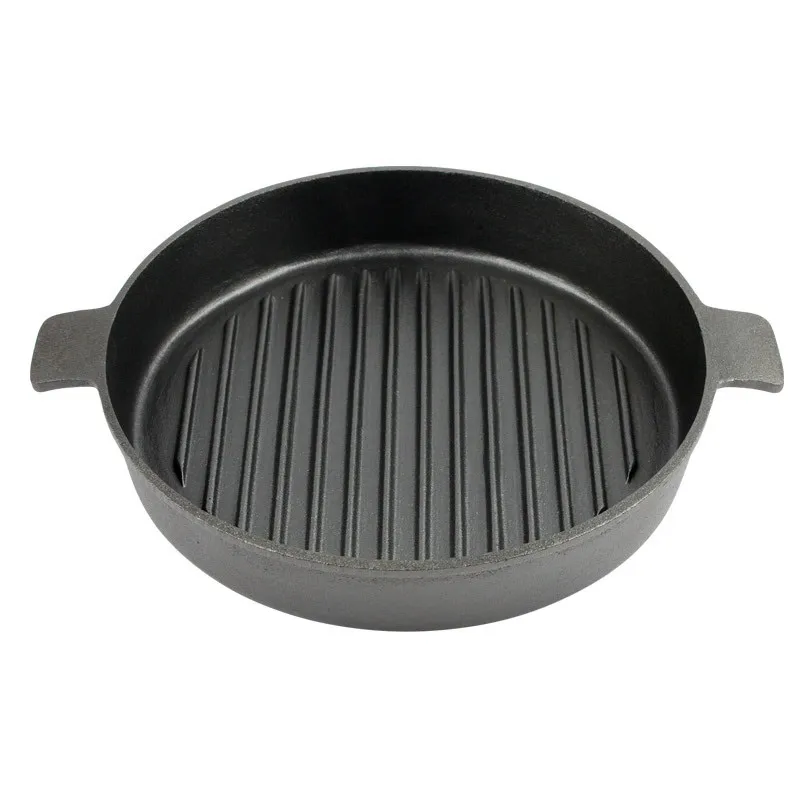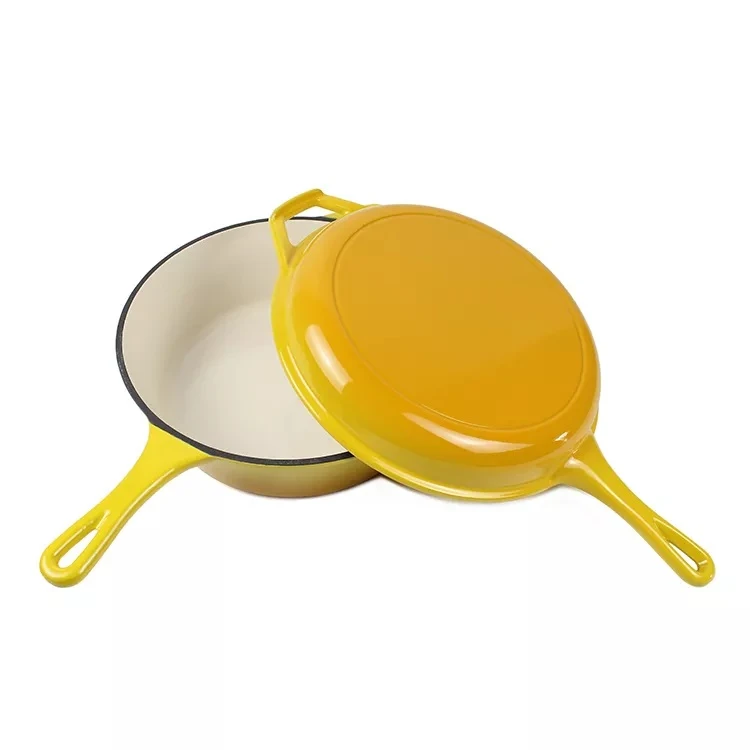feb . 02, 2025 03:15
Back to list
cleaning cast iron skillets
Cast iron skillets are revered for their ability to deliver superior heat retention and even cooking, making them an indispensable tool in any serious cook's kitchen. However, maintaining these skillets can be a daunting task for many, leading to a proliferation of misinformation. Here, we delve into the most effective methods of cleaning cast iron skillets, drawing on decades of professional culinary experience and research-backed practices.
Preserving the skillet's seasoned layer is paramount, and immediate drying post-cleaning is non-negotiable. Any lingering moisture can invite rust, undermining the skillet’s integrity. For an added layer of protection, lightly coat the skillet with a thin layer of vegetable oil or shortening. Use a paper towel to apply the oil and ensure even distribution across the surface. Then, place the pan upside down in a preheated oven at 350°F (175°C) for 45 minutes. This step not only prevents rust but reinforces the seasoned layer. In cases where rust has begun to set in, a more robust intervention may be required. Use fine steel wool to gently buff away the rust until you reach bare metal. Thoroughly cleanse and re-season the skillet as you would initially, baking it with oil to restore its protective film. It’s crucial to recognize that the quality of the cast iron itself plays a significant role in the ease of maintenance. Investing in a high-quality skillet from trusted brands is advisable, as they tend to possess superior material properties and construction that resist warping and heat damage. Proper storage is another aspect not to be overlooked. Store cast iron skillets in a dry environment, ensuring they are completely dry before stowing away. Avoid stacking without protection; consider using paper towels between skillets if stacking is necessary. For chefs and home cooks alike, cast iron skillets represent more than just a cooking tool; they are a culinary heirloom passed down through generations. By employing these expert-backed cleaning methodologies, you guarantee not only a skillet that performs at its best but one that can be handed down with pride. It’s this blend of meticulous care and respect for the material that stands at the core of maintaining cast iron skillets, ensuring they reward you with decades of exceptional meals.


Preserving the skillet's seasoned layer is paramount, and immediate drying post-cleaning is non-negotiable. Any lingering moisture can invite rust, undermining the skillet’s integrity. For an added layer of protection, lightly coat the skillet with a thin layer of vegetable oil or shortening. Use a paper towel to apply the oil and ensure even distribution across the surface. Then, place the pan upside down in a preheated oven at 350°F (175°C) for 45 minutes. This step not only prevents rust but reinforces the seasoned layer. In cases where rust has begun to set in, a more robust intervention may be required. Use fine steel wool to gently buff away the rust until you reach bare metal. Thoroughly cleanse and re-season the skillet as you would initially, baking it with oil to restore its protective film. It’s crucial to recognize that the quality of the cast iron itself plays a significant role in the ease of maintenance. Investing in a high-quality skillet from trusted brands is advisable, as they tend to possess superior material properties and construction that resist warping and heat damage. Proper storage is another aspect not to be overlooked. Store cast iron skillets in a dry environment, ensuring they are completely dry before stowing away. Avoid stacking without protection; consider using paper towels between skillets if stacking is necessary. For chefs and home cooks alike, cast iron skillets represent more than just a cooking tool; they are a culinary heirloom passed down through generations. By employing these expert-backed cleaning methodologies, you guarantee not only a skillet that performs at its best but one that can be handed down with pride. It’s this blend of meticulous care and respect for the material that stands at the core of maintaining cast iron skillets, ensuring they reward you with decades of exceptional meals.
Latest news
-
Revolutionary Cast Iron Griddles Redefine Outdoor CookingNewsMay.09,2025
-
The Ultimate Guide to Cast Iron BBQ GrillsNewsMay.09,2025
-
Revolutionize Your Kitchen with Premium Cast Iron Casserole CookwareNewsMay.09,2025
-
Premium Cast Iron Bakeware CollectionNewsMay.09,2025
-
Our Premium Cast Iron Skillets CollectionNewsMay.09,2025
-
Discover the Art of Cooking with Premium Cast Iron Dutch OvensNewsMay.09,2025
-
The Versatility of a Cast Iron CasseroleNewsApr.21,2025
